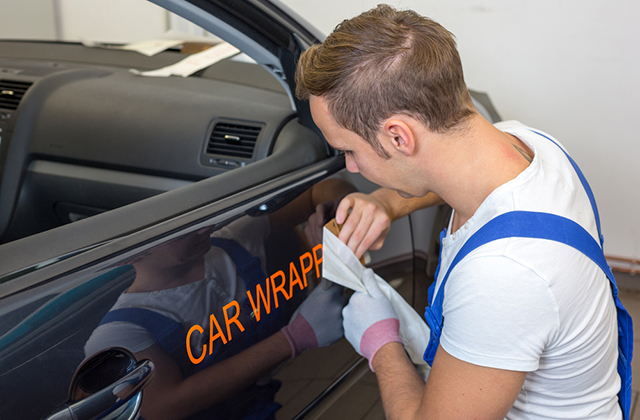
Manual buffing of your cars is a waste of time and you can’t control the pressure but with buffing machine your works output is smooth. A car is a huge investment that should be protected. Just as important as keeping your car’s exterior clean, having a clean interior is an essential part of preventive maintenance. A dirty cabin not only looks and smells bad, it can also create or contribute to operational problems. Not only your car paint should be protected but also your leather with the use of reliable leather care products.
Dirty air vents can spread dust and other allergens about the cabin. Filmy windows and mirrors can obscure the driver’s view of the road. Grit and grime can work their way inside buttons and switches and cause them to fail.
Detailing is just what the name implies—it is a meticulous cleaning, going beyond simply picking up old fast-food wrappers and emptying the ashtray. While many people take their cars to professional detailers, often paying more than $100, it can be done easily at home using regular household tools and cleaners.
Here is how you can detail your car right in your driveway:
Vacuuming
First, you will need a vacuum with an extension hose and several attachments. Work from the top down, so that particles that are dislodged and fall during cleaning can be picked up later when you vacuum the seats and carpet.
Use the vacuum’s upholstery nozzle on the headliner, seats, and other upholstered areas, such as the rear parcel shelf. Do not forget to do the trunk or rear cargo area. Remove the floor mats and vacuum and clean them separately. If you’re ambitious, remove the spare tire and tools to vacuum that compartment.
Use the crevice tool to get into visors, seat pockets, and other tight areas where other attachments will not fit. Use the dusting brush to vacuum plastic, hard vinyl, and metal parts such as vanity mirrors and dashboard components—hard vacuum nozzles can possibly scratch or nick these parts. If you have access to an air compressor, you can use it to blow out dirt from hard-to-reach areas on the dashboard.
Use the floor brush when vacuuming the carpet. Move the seats forward or backward to reach areas under the seat. Take out removable seats to access hard-to-reach areas.
The 2014 Honda Odyssey has a built-in vacuum option that cleans just as well as other shop vacs we’ve tested.
Cleaning
Any auto parts store will have a variety of cleaners for different types of surfaces, including carpet, upholstery, leather, and plastic. But there is no need to buy specialty cleaners just for cars—household cleaners work fine. Be careful, however, to use the right product for the right cleaning job. If in doubt about a product, test an inconspicuous area of the surface to be cleaned.
Carpet
A good way to clean just about any carpet is with a steam cleaner. But renting or buying one just for your car could be expensive. If you already have a steam cleaner, or plan to rent one to steam the carpets in your home, this would be a good cleaning option for your car.
If a steam cleaner is not available, you can use a general spray-on carpet cleaner. Work the compound into the carpet with a stiff bristle brush. Avoid getting the carpet and upholstery too wet as you risk acquiring mildew or damaging nearby electronic equipment. If you have a problem stain such as makeup, oil, gum, tree sap, or tar, you should use a specialty cleaning product to remove it.
Cloth upholstery
If you’re using a steam cleaner, check to see if a special upholstery shampoo or machine attachment is recommended. If you’re not using a steam cleaner, use a spray-on upholstery cleaner and work it in with a soft brush and let it dry, according to directions. Do not forget to clean the rear parcel shelf, safety belts, and seat joints.
Leather trim
Use leather cleaner, saddle soap, or another mild leather soap on a damp cloth and rub it softly onto all leather areas. Remove the excess soap with a clean, slightly damp cloth. Use cotton swabs to remove excess soap from the seams.
Glass
Use glass cleaner to wash the inside of windows. Spray the cleaner directly on the cloth to avoid streaking and getting the cleaner on the upholstery.
Hard surfaces
A household all-purpose cleaner will get to any remaining dirt on your dashboard, rubber door moldings, and interior trim. Again, spray the cleaner directly on a clean cloth. Clean tight areas such as air vents, panel seams, and radio buttons with a dampened soft toothbrush, cotton swab, or small paintbrush. Don’t forget to clean the safety-belt buckles, change drawer, glove compartment, and ashtray.
Final touches
Conditioning
After cleaning, leather can be treated with a conditioner formulated specifically for it. This is particularly valuable for dried-out leather. If you would like to apply a product to your car’s vinyl or plastic, try to find a product that is nongreasy. Many commercial conditioners contain silicone oils that can stain clothing.
Re-vacuuming
A second vacuuming removes dirt dislodged during the cleaning process.
Odor removal
If you still have noticeable odors after such a vigorous cleaning, use an odor-removal product designed to get smells out of fabrics. See our report on how to remove smells from cars.
